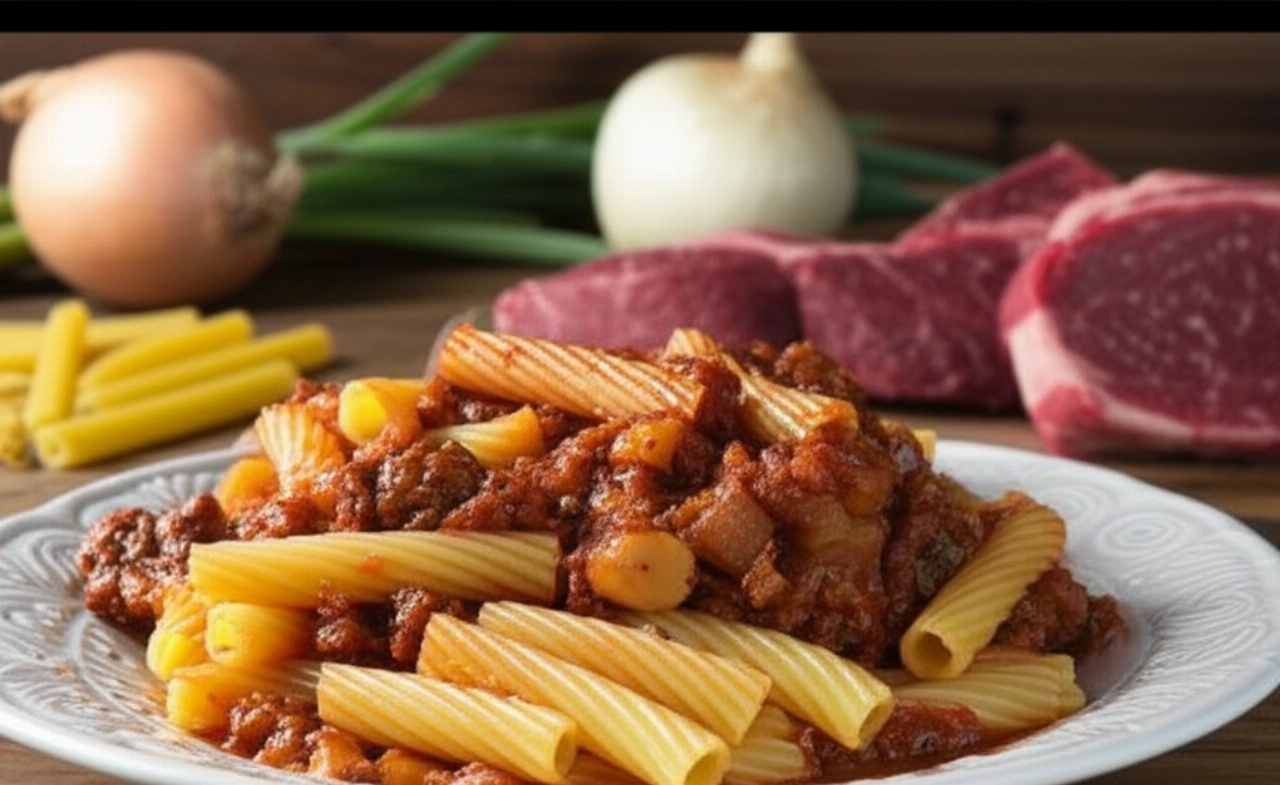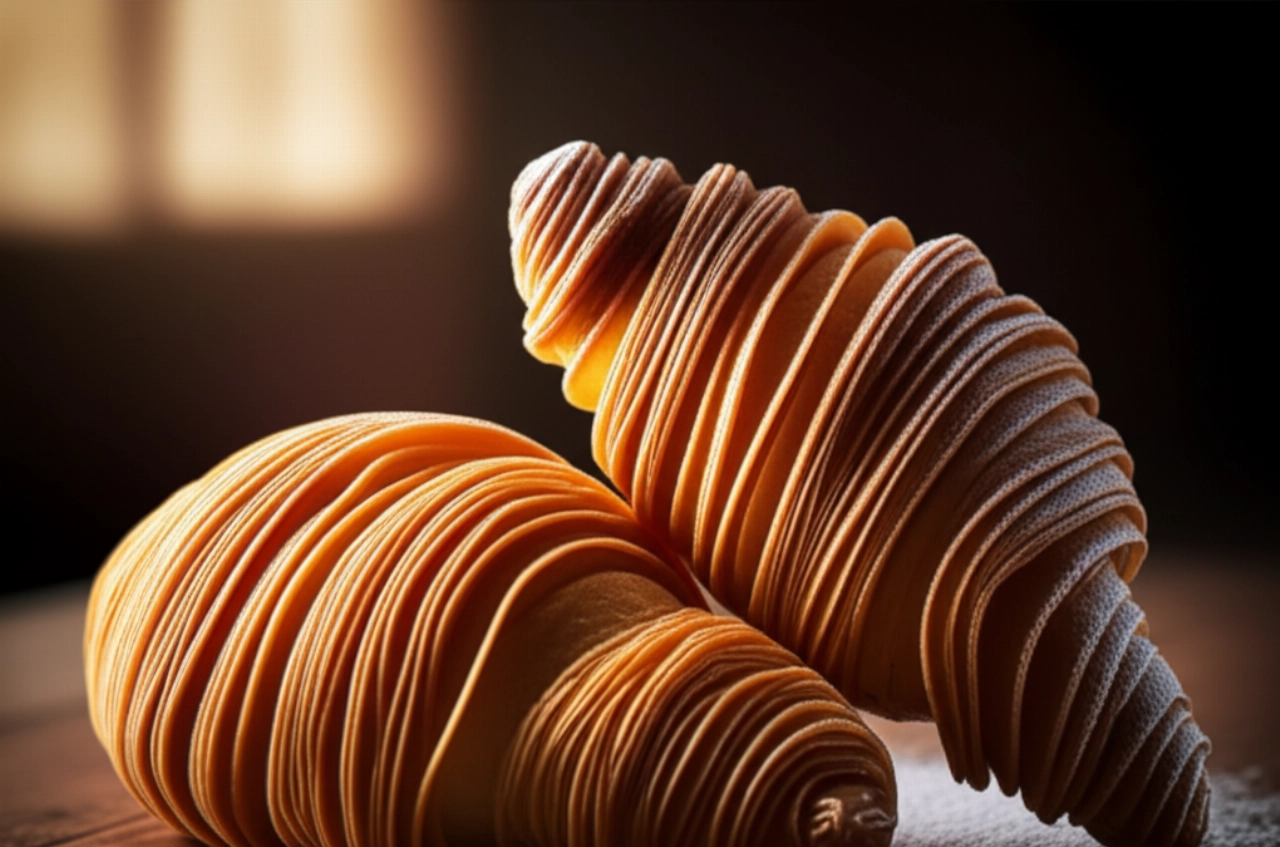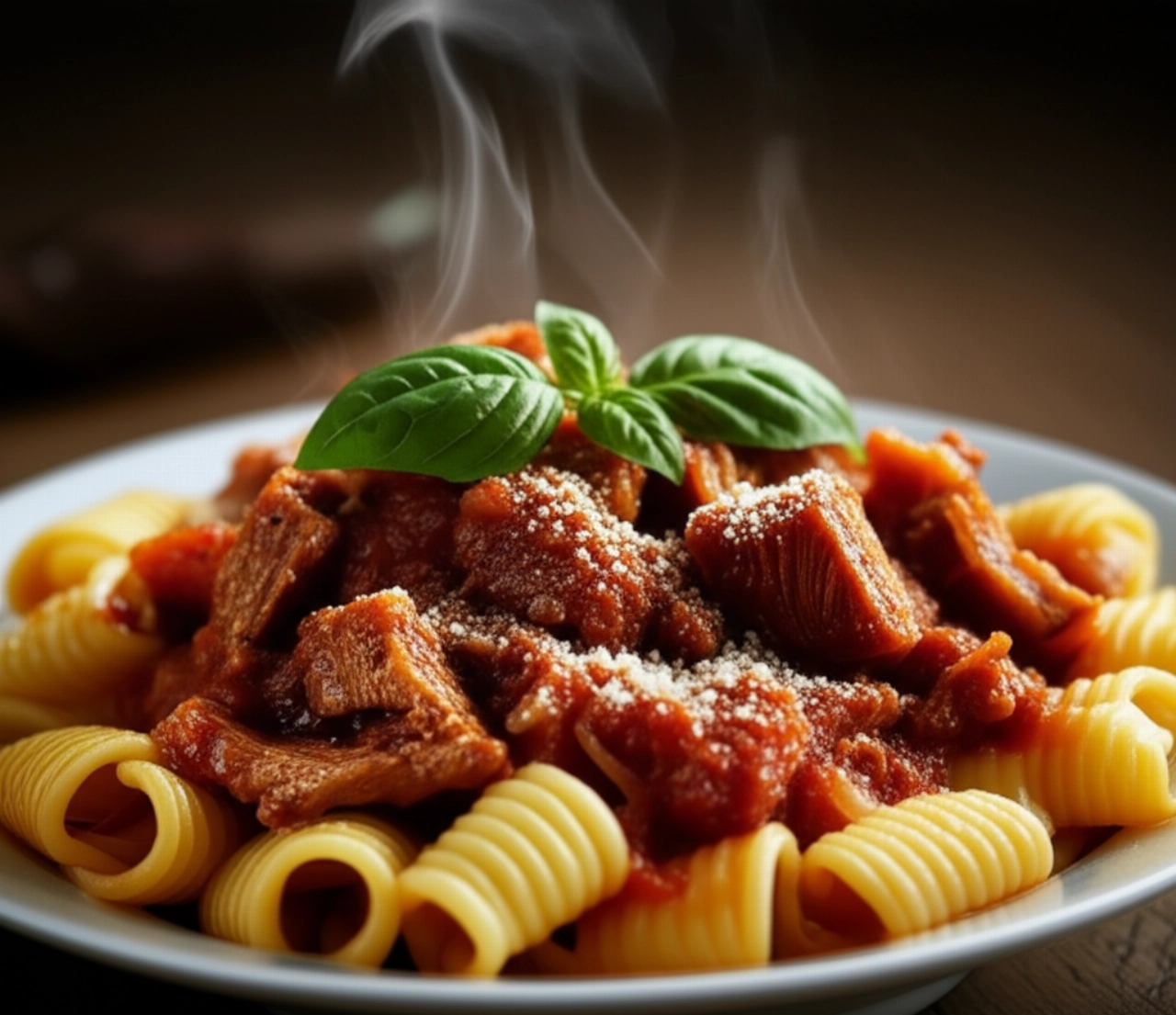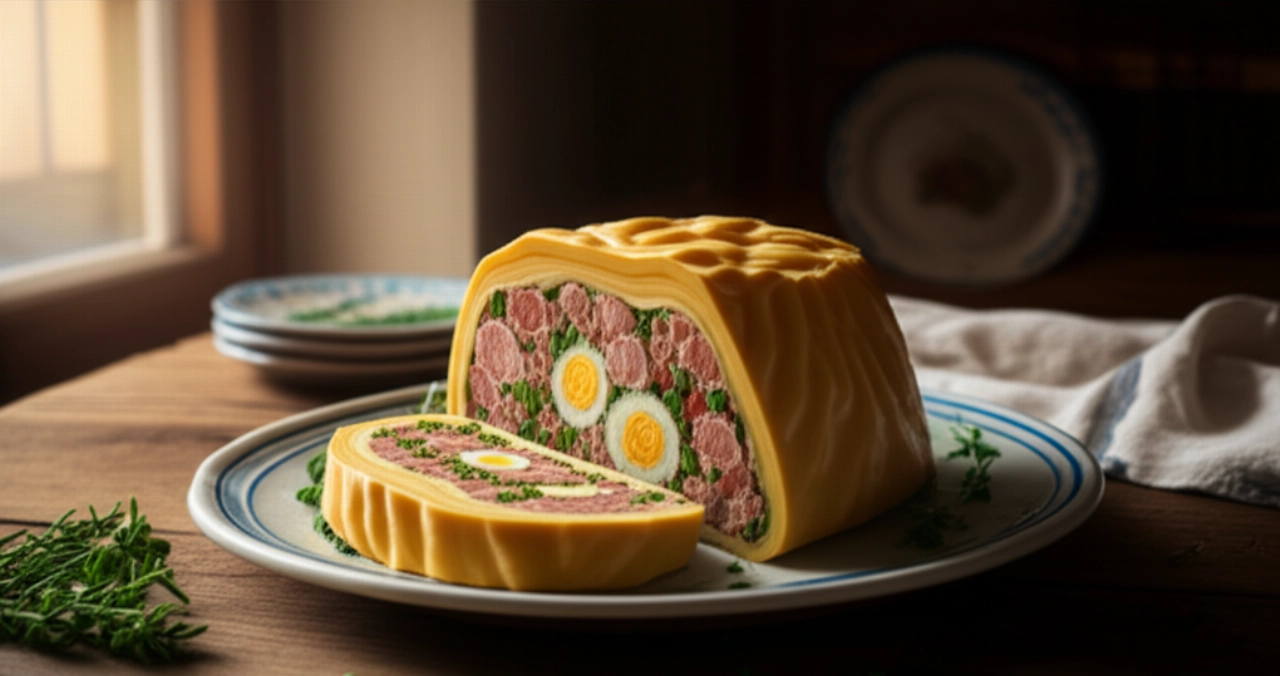Do you dream of bringing to the table a dish that smells of history, patience, and a flavor so profound it makes you close your eyes with every bite? We're talking about Neapolitan Genovese, a true ode to slowness and deliciousness, an onion sauce that transforms, almost by magic, into a rich and sweet cream, capable of making the meat incredibly tender and the ziti a masterpiece.
But let's face it, Genovese can seem like a titanic undertaking, a secret passed down only by true chefs or Neapolitan grandmothers. Too often the result is an acidic sauce, or tough meat, or simply not 'that' Genovese you remember or dream of. The fear of making mistakes, of wasting precious ingredients and hours of work, is real.
Make yourself comfortable, because today I will reveal all the tricks to prepare the most authentic and unforgettable Ziti alla Genovese of your life. Not just a simple list of ingredients, but a real guide, full of practical tips and traditional secrets, which will guarantee you tremendous success. Here, failure is not an option, only the joy of a perfect dish.

Ingredients for a Masterful Genovese: The Choice That Makes the Difference
Genovese is a dish with few ingredients, but their quality and the right choice are fundamental. It's not just about quantity, but about 'soul'.
- Onions: The pulsating heart of Genovese. I highly recommend Montoro copper onions or, alternatively, good quality golden onions. You'll need an abundant quantity, about double the weight of the meat. They must be sweet and juicy, because they will create that velvety and sugary cream. Do not use red or white onions, as they would alter the flavor and color.
- Beef: For Genovese, a cut suitable for long cooking, which will fall apart and become buttery, is traditionally used. The best are beef shank (shoulder round) or lacerto (top round). Ask your butcher for a whole piece or thickly cut, not ground. The meat should have a small amount of fat to flavor the sauce.
- Extra Virgin Olive Oil: A good oil, delicate but flavorful, is the base of the soffritto. Don't skimp on quality.
- Dry White Wine: A glass to deglaze and add depth to the sauce. Choose a wine you'd gladly drink.
- Carrot and Celery: A small amount for the initial soffritto, they will add an aromatic touch without overpowering the onion flavor.
- Salt and Black Pepper: Essential for balancing flavors.
- Ziti or Candele: The traditional pasta par excellence. These are long shapes that must be broken by hand before cooking. Their porosity captures the sauce sublimely.

The 3 Common Mistakes in Genovese (and How to Avoid Them for a Perfect Sauce)
Genovese is a dish of patience, and mistakes often arise from haste or a lack of knowledge of its secrets. Here are the pitfalls to avoid:
- Rushing the Onions: This is the most serious mistake. The onions should not fry quickly and burn. They must wilt slowly, over very low heat, for hours. It is this process that makes them sweet and creamy, eliminating acidity and transforming them into a flavorful jam. If you cook them too quickly, they will become bitter or simply won't melt.
- Choosing the Wrong Meat or Cooking It Poorly: Using lean cuts or quick-cooking cuts will make the meat tough and stringy. The meat for Genovese must cook for a long time in the sauce, absorbing the flavors and becoming incredibly tender. Do not brown it too much at the beginning; it should only be sealed to retain its juices.
- Not Stirring Enough or Not Controlling the Heat: Even though the cooking is slow, the onions tend to stick to the bottom. It is essential to stir regularly, especially at the beginning and end, and keep the flame very low. Too high a heat will burn the onions and ruin all the work.

Grandma's Magic Touch: The Secret to an Inimitable Genovese
My grandmother, when preparing Genovese, always used to say: "This sauce must 'cry' for hours." It wasn't just a metaphor for the long cooking time, but an invitation to observe the onions slowly releasing all their water and transforming. Her secret, which I now reveal to you, was never to rush. And a little trick: after adding the onions and meat, she would cover the pot with the lid slightly ajar and, every now and then, add a ladleful of hot vegetable broth (or just hot water) if she saw the sauce drying out too much. This kept the environment moist and helped the onions melt without burning, creating that irresistible creamy texture that is the hallmark of true Genovese.
Let's Prepare Ziti alla Genovese Together: The Infallible Guide
Ingredients (for 6-8 servings):
- 1 kg Montoro copper onions (or golden)
- 500 g beef shank (or top round)
- 1 small carrot
- 1 small celery stalk
- 50 ml extra virgin olive oil
- 1/2 glass dry white wine
- Salt and black pepper to taste
- Hot water or vegetable broth (if needed)
- 500 g ziti or candele pasta
- Grated Pecorino Romano for serving (optional)
Tools:
- A large, heavy-bottomed pot (ideally terracotta or cast iron)
- A wooden spoon
- A sharp knife
Step-by-Step Procedure:
- Prepare the Onions:
Peel the onions and slice them thinly, into thin half-moons. The thinner they are, the faster they will melt. Don't worry about the quantity; they will reduce significantly. - Prepare the Meat:
If you have a whole piece of meat, tie it with kitchen twine to help it keep its shape during cooking. This will also help you cut it better at the end. If you have large pieces, do not tie them. - The Initial Soffritto:
In the large pot, heat the extra virgin olive oil over medium-low heat. Add the finely chopped carrot and celery. Let them sauté gently for a few minutes until softened. - Brown the Meat:
Add the meat to the pot and brown it on all sides to seal it. It should get a nice golden color, but not burn. This step is quick; it just serves to create an outer crust. - Deglazing and the Onions:
Deglaze with the white wine, letting it evaporate completely. Now it's time for the onions: add them all to the pot, on top of the meat. They will seem like a lot, but they will reduce. - The Long Cooking (The Heart of Genovese):
Cover the pot with a lid, leaving a small gap for steam to escape. Lower the flame to the absolute minimum. The onions will begin to release their water and "cry." Stir occasionally, especially at the beginning, to ensure they don't stick. Cooking will last at least 3-4 hours, but even 5-6 hours is not too much. The onions must literally melt, transforming into a dense, golden cream, almost a jam. If the sauce dries out too much, add a ladleful of hot water or vegetable broth. The meat will become incredibly tender, almost falling apart with a fork. - Prepare the Pasta:
When the sauce is almost ready, bring a large pot of salted water to a boil. Break the ziti or candele by hand into pieces about 4-5 cm long. - Final Sautéing:
Remove the meat from the sauce and set it aside. Cook the ziti in the boiling water. Drain them al dente and transfer them directly to the pot with the Genovese sauce. Sauté them over medium-low heat for a couple of minutes, stirring well, so that the pasta absorbs all the flavor of the sauce. - Serve:
Cut the meat into coarse pieces or shred it with a fork (it will be incredibly tender!). Serve the ziti hot, accompanied by the pieces of meat and, if you like, with a sprinkle of grated Pecorino Romano.
Tips and Frequently Asked Questions about Ziti alla Genovese
I understand that such a traditional dish can raise questions. Here are the answers to the most common ones:
Can I use another type of meat?
For authentic Genovese, the best cuts are beef shank or top round. You can try other braising cuts, but make sure they are suitable for long cooking and have a good amount of connective tissue that melts, making the meat tender. Avoid overly lean cuts.
How long should the sauce cook?
The minimum cooking time is 3-4 hours, but the sauce improves with time, even up to 5-6 hours. The secret is that the onions must melt completely and the meat must become incredibly tender. There's no fixed time, but a visual result: the onions should be a golden cream.
My onions are bitter, what did I do wrong?
Most likely, you cooked them over too high heat or too quickly. The onions must wilt gently, over very low heat, without ever turning dark. Rushing them makes them bitter. Also, make sure to use sweet onions like copper or golden varieties.
Can I prepare Genovese in advance?
Absolutely yes, in fact! Genovese is one of those dishes that improves the next day. You can prepare the sauce with the meat in advance, store it in the refrigerator, and gently reheat it before tossing with the pasta. The flavors will meld even better.
How do I store leftover sauce?
Genovese sauce can be stored in the refrigerator in an airtight container for 3-4 days. It can also be frozen in portions: it keeps perfectly for 2-3 months. Thaw it slowly in the refrigerator before reheating.
A Masterpiece of Patience and Flavor
There you have it! Now you no longer just have a recipe, but all the secrets to bring to the table a dish that tastes of home, tradition, and love. Genovese is a masterpiece of patience, an ode to slow cooking that rewards every wait with an explosion of flavors.
Don't be afraid to experiment. Cooking is a gesture of creativity and generosity. But start with this solid base, and you'll see that applause will not be lacking. The aroma that will fill your kitchen will already be a promise of success, and the first taste will make you realize that every hour of waiting was worth it.
Have you prepared your Genovese? We're eager to know how it went! Leave a comment below, tell us about your experience, or share a photo on Instagram by tagging @CercaRicette.it. And if you love authentic flavors and sauces that cook for hours, you can't miss our recipe for Neapolitan Ragù or an unforgettable first course like Pasta and Potatoes with Provola.





